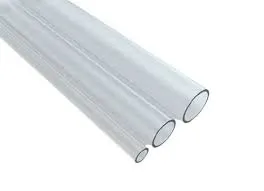Sep . 02, 2024 11:09 Back to list
High-Quality Plastic Pipe Fittings for Durable Solutions
Understanding Plastic Pipe Fittings A Comprehensive Overview
Plastic pipe fittings are an integral part of modern plumbing and piping systems, serving as connectors that enable the seamless flow of liquids and gases. With advancements in material science, plastic fittings have gained prominence due to their versatility, durability, and cost-effectiveness. This article explores the features, benefits, and types of plastic pipe fittings, providing a comprehensive understanding of their role in various applications.
Features of Plastic Pipe Fittings
Plastic pipe fittings are manufactured from various materials, including PVC (Polyvinyl Chloride), CPVC (Chlorinated Polyvinyl Chloride), and PEX (Cross-Linked Polyethylene). Each material possesses unique properties that make it suitable for specific applications. For instance, PVC is well-known for its excellent resistance to corrosion and moisture, making it ideal for water and drainage systems. CPVC, on the other hand, can withstand higher temperatures, making it suitable for hot water applications.
One of the defining features of plastic fittings is their lightweight nature. This characteristic simplifies transportation and installation, reducing labor costs and time. Additionally, plastic fittings are resistant to various chemicals, which enhances their longevity and reduces the risk of contamination in water supply systems.
Benefits of Using Plastic Pipe Fittings
The adoption of plastic pipe fittings comes with a host of benefits. Firstly, they are typically less expensive than their metal counterparts, making them a cost-effective choice for both residential and commercial projects. The ease of installation further contributes to overall savings, as fewer specialized tools and less technical expertise are required.
plastic pipe fittings

Moreover, plastic fittings are less prone to scaling and corrosion, extending the lifespan of the entire piping system. This attribute is particularly advantageous in areas with hard water, where mineral buildup can severely impact metal fittings. Additionally, the smooth interior surface of plastic pipes helps maintain optimal flow rates and reduces the risk of blockages.
Another noteworthy benefit is the flexibility of certain types of plastic fittings, such as PEX. This flexibility allows for easier installation in tight spaces and minimizes the need for additional fittings or joints, reducing potential leak points.
Types of Plastic Pipe Fittings
Plastic pipe fittings come in various shapes and sizes to accommodate different plumbing needs. Common types include elbows, tees, couplings, and adapters.
- Elbows are used to change the direction of the pipeline, typically at a 90-degree or 45-degree angle. - Tees allow for the junction of three pipes, facilitating branch lines into a main pipeline. - Couplings connect two sections of pipe, ensuring a continuous flow. - Adapters provide a transition between different types of pipes or fittings, such as from plastic to metal.
Conclusion
In conclusion, plastic pipe fittings represent a versatile and economical choice for plumbing systems in various settings. Their lightweight nature, resistance to corrosion, and ease of installation make them an attractive alternative to traditional metal fittings. As technology continues to advance, the quality and applications of plastic pipe fittings are set to improve, making them an indispensable component in the future of plumbing and infrastructure. Whether for residential use or large-scale industrial projects, understanding plastic pipe fittings and their benefits can help ensure efficient and reliable piping systems.
-
Premium CPVC Sheet: High-Temp & Chemical Resistant Solutions
NewsAug.15,2025
-
Durable PPR Pipe for Hot & Cold Water Systems - Easy Install
NewsAug.14,2025
-
Durable HDPE Sheet | Versatile & Impact-Resistant Plastic
NewsAug.13,2025
-
Premium PVC Soft Sheets: Clear, Flexible & Durable
NewsAug.12,2025
-
Premium PVC Round Rods: Durable, Chemical Resistant, Easy to Machine
NewsAug.11,2025
-
PP U-channel: Chemical-Resistant, Lightweight & Durable
NewsAug.10,2025

